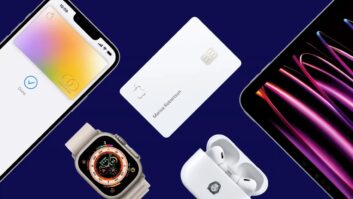The estimated 5 million unit sales of Apple’s iPhone 5 during the opening weekend of Sept. 21-23 were considered “disappointing” by more than a few industry and financial analysts early last week.
For those of you who have spent a career trying to get lines of CE products to do that kind of unit volume in a half year or more, I can hear your snickering about such a “disappointment.” But that’s what happens when perceptions about a company jump the shark.
For instance, Nick Bilton of The New York Times published a column on Sept. 23 wondering when Apple might be the first trillion dollar company — April 9, 2015, which he wrote is considered a “conservative” estimate, or a more aggressive estimate of Aug. 16, 2013?
So what happens if the $1 trillion mark isn’t passed by 2013? Or 2015? Will Apple stock price plummet? Will the economy survive?
OK, forget the hyperbole and dollar figure — if you can. The point is that Apple is perceived to be the world’s corporate colossus that has disrupted entire industries and whose marketing and sales clout overshadows such giants as ExxonMobil, Walmart or its former investor, Microsoft. (I still can’t see how a technology device and content provider can be more valuable than a giant energy company, but that’s just me.)
Apple has helped disrupt more industries and companies than you can name.
But it has also created plenty of industries. For instance, the market for Apple-related accessories has been estimated at being $5 billion to $6 billion annually — and that was last year, well before the introduction of the new Lightning connector on iPhone 5.
The new connector enables Apple to come up with what are considered thinner and more efficient hardware designs. It also provides manufacturers with a sudden jolt of new demand for iPhone 5 accessories.
As John Laposky reported in our special “Apple Q4 ’12” report on p. 26, manufacturers grabbing just a small part of the iPhone accessories market can “sustain a company for the year.”
I haven’t even mentioned the much-discussed, much-anticipated Apple TV, which was supposed to arrive this year and probably will arrive in some form in 2013.
Part of this special report is a story by Greg Tarr based on a new study on iTV by Quixel Research that shows, in part, that 80 percent of all current flat-panel TV owners would be either extremely, very or somewhat interested in buying one of the new Apple TVs.
Those surveyed don’t even know the screen size or format, features or pricing of the unit, or if it is another set-top box or a full-fledged flat-panel TV.
Many who make a living selling TVs fear Apple’s entry into the market. Others believe that an iTV with the usual Apple flair for design, quality and ease of use will spur innovation by existing TV manufacturers.
But before we get to 2013, take a look at our Special Report beginning on p. 22, and see how Apple will affect everyone’s business in some form or another during the fourth quarter.













